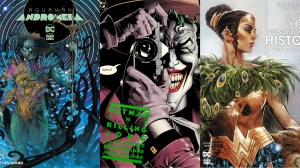In the early ’70s, filmmaker Wes Craven proved himself to be one of the most compelling and controversial filmmakers in the world of horror, delivering audiences uncompromising and brutal cautionary tales. Later in his career, the filmmaker got even more ambitious by tackling themes of the supernatural, while the ’90s allowed him to not only satirize the genre that made him famous, but deliver compelling entries into horror subgenres he had previously avoided.
Videos by ComicBook.com
Along with filmmakers like Tobe Hooper, George Romero, and John Carpenter, Craven became one of the defining voices in the world of horror, which many contemporary filmmakers credit with their inspiration to pick up a camera.
Sadly, the filmmaker passed away from brain cancer in 2015, only a few weeks after his 76th birthday.
In honor of the filmmaker’s birthday, we’re revisiting his most successful directorial endeavors. Scroll down to see how they stack up!
‘The Last House on the Left’

Craven’s debut film The Last House on the Left turned the horror world on its head in 1972 with its brutal depiction of controversial subject matter, with the film being just as divisive today as it was more than 40 years ago.
When two teenaged girls head into the city to see a concert, they end up trying to buy drugs from a gang of recently escaped convicts. The criminals rape and murder the girls, all while the teenagers’ parents wonder why they haven’t heard from their daughter. When the thugs unknowingly cross paths with the parents, their identity and their horrible crimes are exposed, leading the parents to enact a brutal revenge on the criminals.
Compared to films from previous decades, Last House on the Left was far more graphic and brutal than what audiences had come to expect. The horrifying portrayal of the violent crimes feels like you’re watching news footage as opposed to a film, giving viewers an unsettling experience. While it might not be his most accomplished film, it’s easily one of the most definitive films of the genre that inspired new, more realistic trends in horror.
‘The Hills Have Eyes’
Thanks to the acclaim he earned with Last House on the Left, Craven was given a bigger opportunity to continue his cinematic brutality with The Hills Have Eyes.
When a family thinks they have found a shortcut through a desert canyon, they run into car trouble, which makes them the targets of a group of cannibals who proceed to stalk, torture, and kill members of the family for no real reason other than the family being there.
Craven expanded the scope of his stories with this film, though it is ultimately another story about human brutality. The filmmaker continued his themes of reminding audiences that no character, no matter how wholesome, would make it out of a terrifying ordeal safely, leading audiences to never know what to expect from one scene to the next.
‘A Nightmare on Elm Street’

The filmmaker continues to explore the dangers of revenge, though with A Nightmare on Elm Street, Craven took the concept into the world of the supernatural, ultimately delivering audiences one of the most iconic villains in history with Freddy Krueger (Robert Englund), ultimately inspiring eight more films in the franchise.
When a local man is freed from jail on a technicality after murdering young children, parents take retribution into their own hands by burning the man alive. Years later, teenagers in the community begin to experience horrifying dreams depicting Krueger, with injuries they suffer in their subconscious permeating their reality.
Craven’s earlier films focused on the reality of horrific crimes, while Nightmare on Elm Street took those concepts into an all-new direction, bringing in traditional slasher tropes with supernatural and psychological terrors. It’s hard to overstate the ways in which the film impacted the genre, with Krueger remaining as popular today as ever.
‘The Serpent and the Rainbow’
While A Nightmare on Elm Street took real-world themes of vengeance and demonstrated them through a supernatural lens, The Serpent and the Rainbow took the supernatural concept of zombies and conveyed them with reality, which was inspired by “true events.”
An anthropologist is sent to Haiti after reports that a man died, was buried, and rose from the grave after consuming specific herbs. The researcher procures these herbs in hopes of developing anesthetics, only to get caught up in the community’s revolution, putting his life in danger and potentially giving him a chance to see if someone really can return from the grave.
Based on a non-fiction book of the same name, Serpent and the Rainbow is sure to challenge your beliefs in the afterlife and also blur the line between fact and fiction in surprising ways.
‘The People Under the Stairs’
Some horror films can easily be placed into one subgenre, yet The People Under the Stairs takes audiences into a number of different areas that make for an unpredictable and unique experience.
When a teenager breaks into the home of his family’s landlord in hopes of recouping some of the money they have taken from them, he discovers breaking in is easy, but escaping is impossible. The teenager discovers a variety of horrors in the home, which includes the captive “people under the stairs,” who might have a worse fate than the teen and his family.
While the film is full of a variety of straightforward horror elements, there is also plenty of comedy and absurdity, leading viewers on a shocking journey that must be seen to be believed.
‘New Nightmare’

After five sequels in the Nightmare on Elm Street series, fans had grown tired of watching Freddy Krueger repeat his crimes on new groups of teens ad nauseam. Craven took the characters in all-new directions, allowing him to comment on the effects of the horror genre as a whole.
10 years after the release of Nightmare on Elm Street, star Heather Langenkamp plays a fictional version of herself who seems haunted by the concept of Freddy Krueger. She knows the character isn’t real, as confirmed by Craven and actor Englund as themselves, yet that doesn’t stop the supernatural torment. Upon the discovery that a supernatural force uses the iconic Krueger as a conduit, Langenkamp realizes she must have a real confrontation with the character who helped launch her career.
Arguably one of Craven’s most ambitious films, New Nightmare not only helped revive interest in the franchise he created but also delivered audiences a unique and self-reflexive film that broke the wall between fictional horrors and audiences.
‘Scream’

Through a collaboration with writer Kevin Williamson, Craven continued his themes of reflecting the horror genre back towards viewers with fresh perspectives, this time setting his sights on the slasher subgenre.
A series of grisly murders begin taking place with teens of the local high school becoming the victims, leaving authorities confused as to what ties the murders together. Horror-savvy teens use their knowledge of horror movies in hopes of predicting what the killer might do next, as well as develop strategies to survive the encounter.
Slashers were one of the most popular horror movies in the ’80s, with the concept stagnating in the early ’90s. Craven and Williamson’s approach to the concept revived interest in the subgenre, inspiring countless imitators who attempted to deliver scripts that were as clever and humorous as what Scream offered, to no avail. Unsurprisingly, the unique collaborative process between the two inspired three sequels and a TV series.





